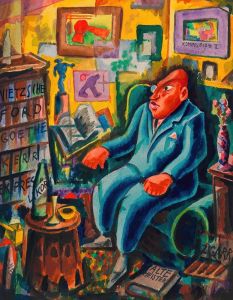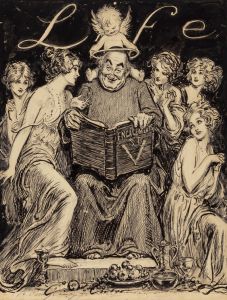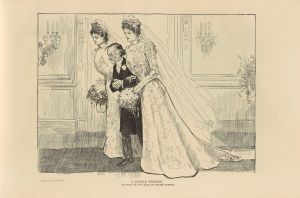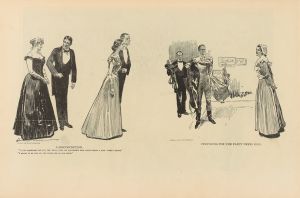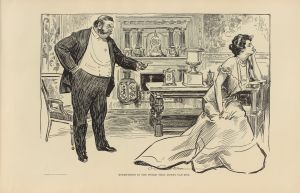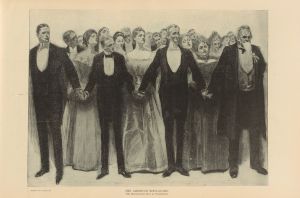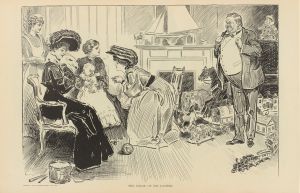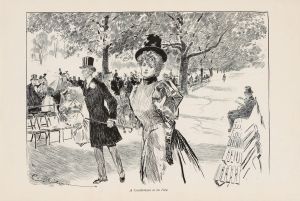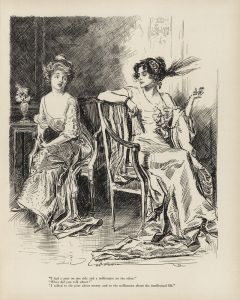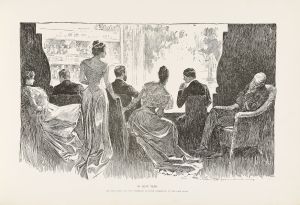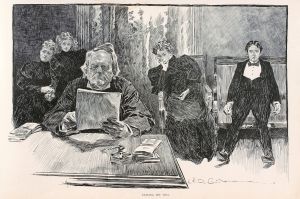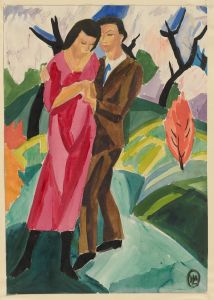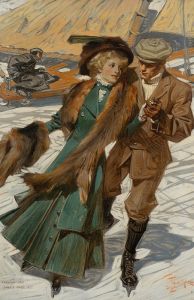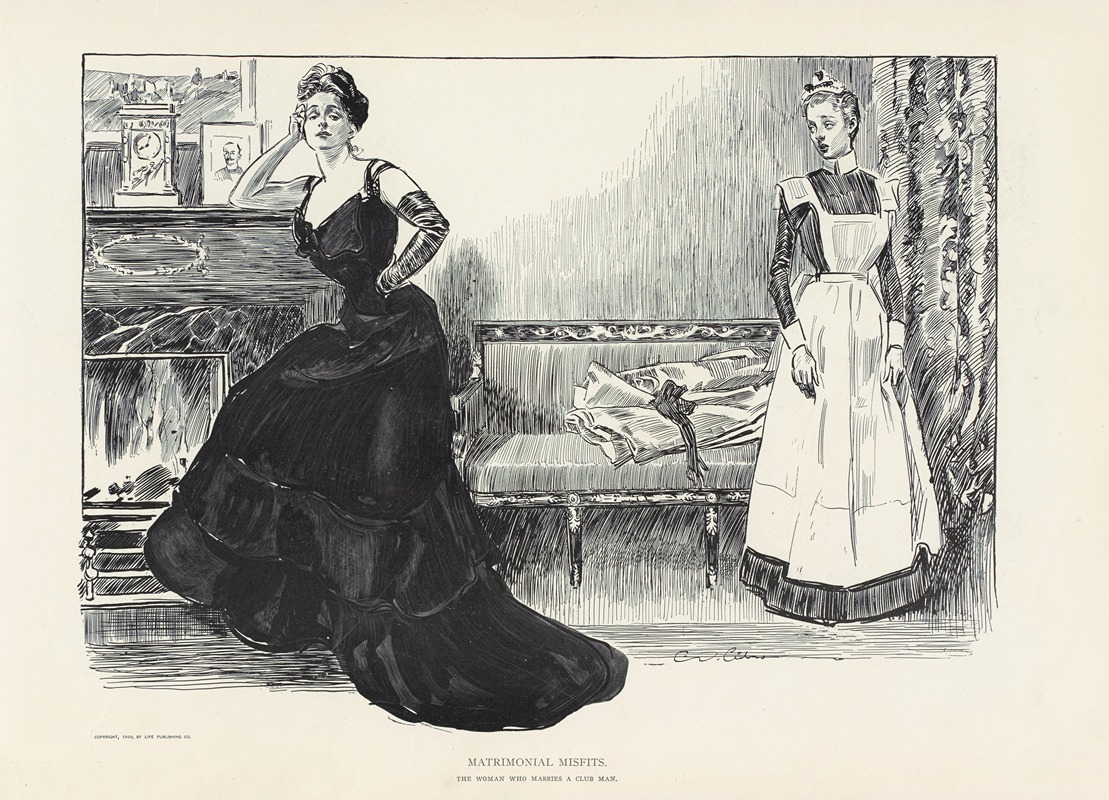
Matrimonial misfits – The woman who marries a club man
A hand-painted replica of Charles Dana Gibson’s masterpiece Matrimonial misfits – The woman who marries a club man, meticulously crafted by professional artists to capture the true essence of the original. Each piece is created with museum-quality canvas and rare mineral pigments, carefully painted by experienced artists with delicate brushstrokes and rich, layered colors to perfectly recreate the texture of the original artwork. Unlike machine-printed reproductions, this hand-painted version brings the painting to life, infused with the artist’s emotions and skill in every stroke. Whether for personal collection or home decoration, it instantly elevates the artistic atmosphere of any space.
Charles Dana Gibson was an influential American illustrator best known for his creation of the "Gibson Girl," an iconic representation of the independent and fashionable American woman at the turn of the 20th century. One of his notable works is "Matrimonial Misfits – The Woman Who Marries a Club Man," which is part of a series of illustrations that humorously depict the social dynamics and gender roles of the time.
"Matrimonial Misfits – The Woman Who Marries a Club Man" was created during the late 19th or early 20th century, a period when Gibson's illustrations were widely published in popular magazines such as Life, Harper's Weekly, and Scribner's. These publications helped to cement his reputation and the popularity of the Gibson Girl, who became a cultural icon representing the idealized American woman.
The illustration in question portrays a common social scenario of the era: a woman who marries a man deeply involved in club life. Clubs were social institutions where men gathered to socialize, network, and engage in leisure activities away from their homes and families. These clubs were often exclusive and male-dominated, reflecting the gender norms and societal expectations of the time.
In "Matrimonial Misfits – The Woman Who Marries a Club Man," Gibson uses his characteristic style to highlight the potential pitfalls and humorous aspects of such a marriage. The illustration typically features a well-dressed woman, embodying the elegance and poise of the Gibson Girl, juxtaposed with her husband, who is often depicted as being more interested in his club activities than in his marital responsibilities. This contrast serves to underscore the challenges faced by women who found themselves married to men who prioritized their social lives over their domestic duties.
Gibson's work often included subtle social commentary, and this illustration is no exception. It reflects the tensions and changing dynamics in gender roles during the late 19th and early 20th centuries. The Gibson Girl, while embodying traditional feminine beauty, also represented a new wave of independence and self-assuredness among women. This duality is evident in the way Gibson's illustrations often portrayed women as both fashionable and capable, navigating the complexities of modern life.
The humor in "Matrimonial Misfits – The Woman Who Marries a Club Man" lies in the exaggerated expressions and situations, which were a hallmark of Gibson's style. His ability to capture the nuances of social interactions with wit and charm made his work widely appealing and influential. The illustration not only entertained but also prompted viewers to reflect on the evolving roles of men and women in society.
Charles Dana Gibson's legacy as an illustrator is significant, and his work continues to be studied and appreciated for its artistic merit and cultural insights. "Matrimonial Misfits – The Woman Who Marries a Club Man" is a prime example of how his illustrations captured the spirit of an era, offering a window into the social fabric of early 20th-century America.





